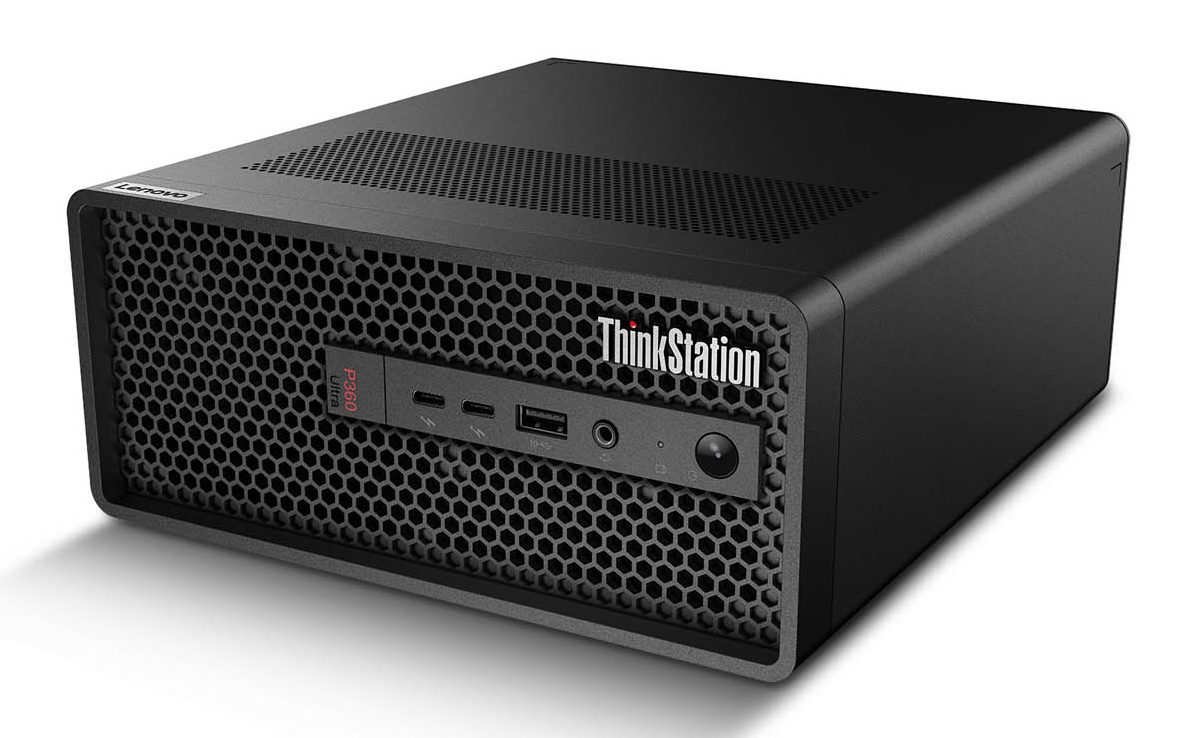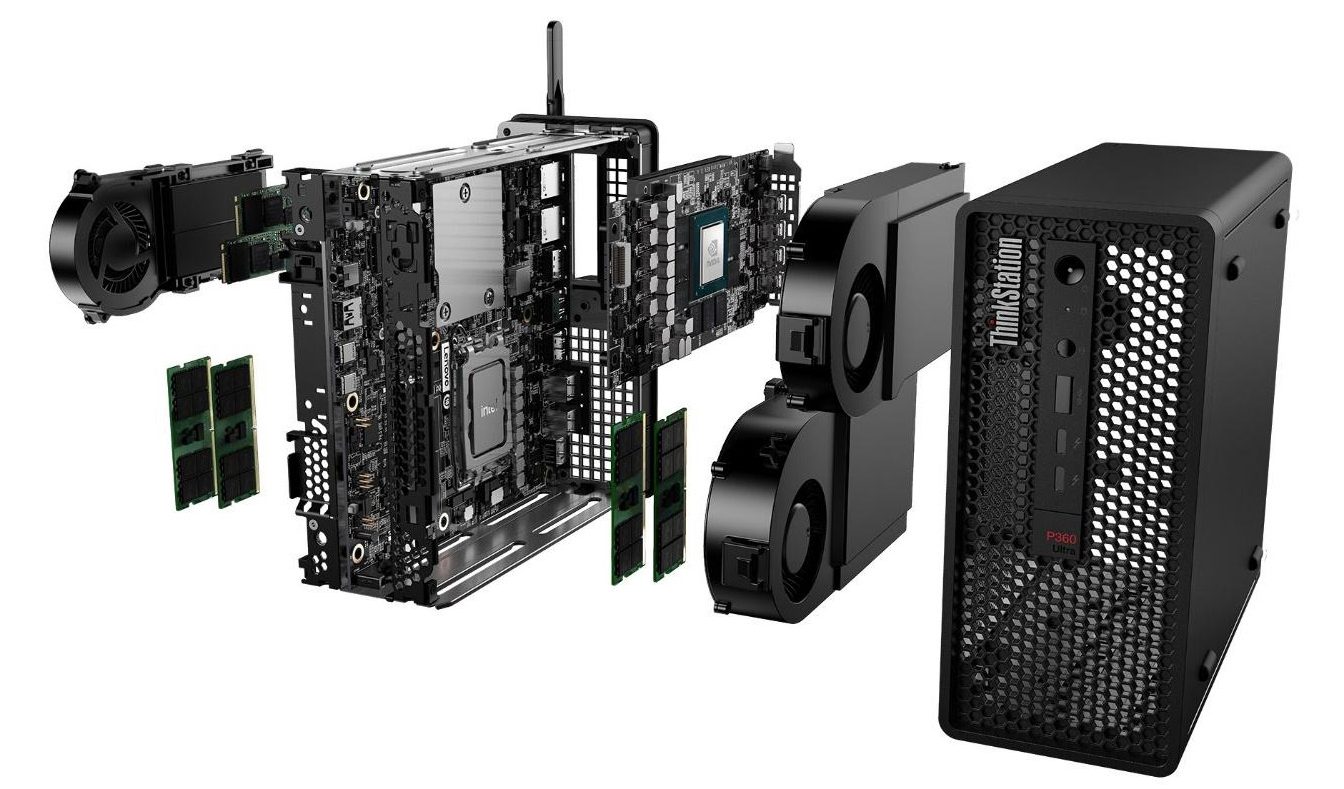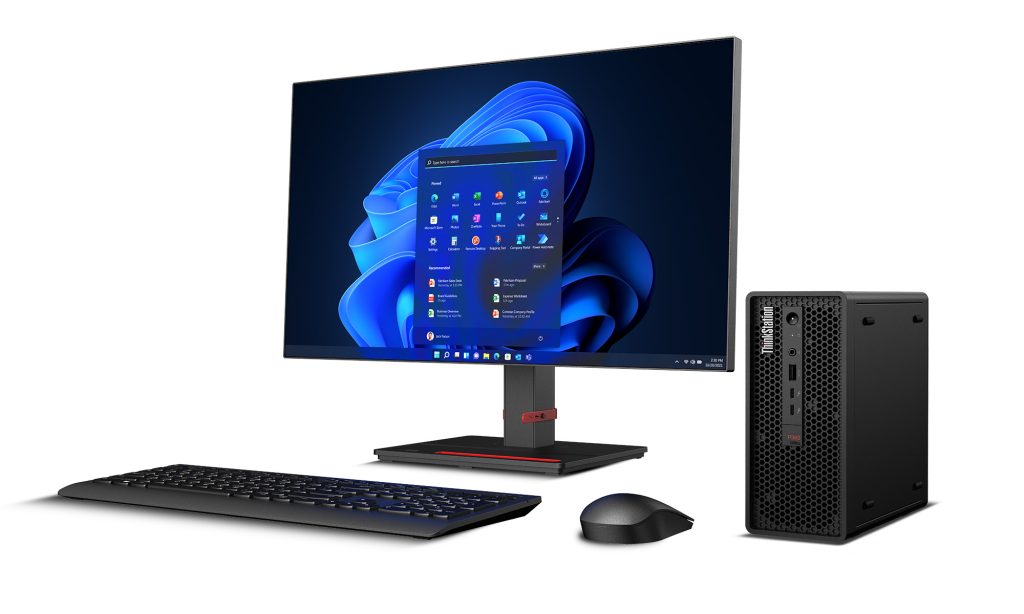Despite its super compact form factor, Lenovo’s new high-performance workstation can support the most demanding workflows, empowering product designers and engineers now and well into the future
Everyone loves a compact workstation. They save valuable desk space – both at home or in the office – and are easy to re-locate. And at just 3.9 litres in volume, the Lenovo ThinkStation P360 Ultra is one of the smallest out there. But unlike other sub-4-litre machines, this innovative new workstation has few compromises when it comes to specifications and performance.
In fact, the ThinkStation P360 Ultra has many of the hallmarks of an 8-litre Small Form Factor (SFF) workstation, even a standard desktop tower, which is typically five or six times larger by volume.
But what does this mean for product designers, engineers, and manufacturing professionals – the very people that push the limits of powerful pro software, including CAD, visualisation, simulation, and CAM?
This article focuses on three of the leading components within the ThinkStation P360 Ultra – GPU, CPU, and memory – and explores what they mean for the most demanding product development workflows.

GPU (Graphics Processing Unit)
The GPU is traditionally one of the big compromises of a small workstation. Sub-4-litre machines are typically limited to entry-level professional GPUs. These are fine for pure 3D design work, as the graphics requirements for most 3D CAD applications are relatively low. However, for more demanding workflows, entry-level GPUs often fall short.
The ThinkStation P360 Ultra breaks the mould with the option of a much more powerful GPU than other machines in its class. The NVIDIA RTX™ A5000 laptop GPU with 16 GB of VRAM is a big jump up from the NVIDIA RTX ‘2000’ or ‘3000’ class GPUs often found in compact workstations. It means the ThinkStation P360 Ultra can be used for a much wider range of workflows beyond CAD, including Virtual Reality (VR), GPU rendering, and real-time visualisation. It delivers both faster processing and expanded memory to handle very complex datasets.
In order to fit the powerful NVIDIA RTX A5000 laptop GPU into a desktop chassis, Lenovo developed a custom MXM board driven through a PCIe standard riser. Currently, no other major OEM offers anything similar for such a powerful workstation-class GPU.
Processor (CPU)
The ThinkStation P360 Ultra offers an extensive choice of 12th Gen Intel® Core™ processors, making it extremely well suited to a wide range of product development workflows. This includes 35-watt, 65-watt and 125-watt processors, up to the Intel Core i9-12900K, which has 8 Performance-Cores and 8 Efficient-Cores for a total of 24 threads.
In contrast, some competitive workstations only offer 35-watt or 65-watt CPUs. This gives the ThinkStation P360 Ultra an advantage, particularly in highly multi-threaded workflows such as ray trace rendering, engineering simulation, and CAM, where more power means more cores can run at higher frequencies, minimising the time it takes to render, solve or generate complex multi-axis toolpaths.
With a max turbo frequency of 5.2 GHz, the Intel Core i9-12900K processor also delivers excellent single threaded performance which is important for CAD and for general operations.
But performance is not just about specifications – components need to be expertly engineered within the workstation to deliver on their full potential. 125-watt processors produce more heat, so to maintain the highest frequencies, they need to be kept cool. And this must be done over a sustained period. In design visualisation, for example, multiple frames of an animation can take hours to render, so it’s important that processors don’t clock down after a few minutes.
A small chassis brings significant thermal challenges, but the ThinkStation P360 Ultra excels thanks to its advanced cooling system, which has been optimised by Lenovo’s thermodynamics engineers with the help of computational fluid dynamics (CFD) software. The unique design features a motherboard that resides in the middle of the chassis, thus allowing for active components on both sides. This dual chamber design allows for better isolation of high thermal components (i.e. CPU, GPU and storage) thus maximizing thermal dissipation, and helping get the very best out of the powerful 125-watt processor.

Memory
Thanks to a close collaboration with Intel, the ThinkStation P360 Ultra
stands out from the competition because it can support up to 128 GB of memory. 128 GB is double that of other sub-4-litre workstations, which typically max out at 64 GB.
While most mechanical CAD assemblies will fit comfortably into 64 GB, some of the larger datasets used in product development – both upstream and downstream – may struggle. In this respect, the ThinkStation P360 Ultra opens new possibilities for design and engineering professionals, as it can handle a much wider range of workflows than other super compact workstations. This includes complex engineering simulation, comprising FEA, CFD and multi-physics; visualisation with very large models and textures; and reverse engineering with colossal point cloud datasets.
The ThinkStation P360 Ultra’s 128 GB of DDR5 memory is spread across four SoDIMM slots. Fully upgradeable, users can start with a smaller amount and then add more as necessary. With consumer and industrial products continuing to grow in complexity, demands on workstation memory will only increase in the future, so this gives users real flexibility.
A game changing workstation
Compact workstations used to be largely limited to CAD-centric workflows, but the ThinkStation P360 Ultra transforms that completely, particularly when it comes to 3D graphics.
The game changing workstation means product designers and engineers no longer need to rely on larger towers to fully support more challenging workflows like VR, real-time viz and GPU rendering. Such demanding users can now get the performance they need in a super compact sub-4-litre form factor, now and well into the future.
To learn more about the practical benefits of the Lenovo ThinkStation P360 Ultra’s space-saving design, read this article
Lenovo ThinkStation P-Series workstations
Lenovo ThinkStation P-Series workstations come in a wide range of form factors from minute desktops to fully expandable powerhouses. All workstations can be configured for a range of different workflows and budgets
www.lenovo.com/workstations






